Estimated reading time 11 minutes, 1 seconds.
Ah, winter. It’s a favorite season for many. Magical snowfall. Holiday vibes. Skiing and hot tubs. Snowball fights and sledding.
If you come across an airline employee during the winter, however, they likely won’t be pondering the jolliness of the season — at least not if they’re at work. For airlines, winter often brings a logistical mess. At the very least, successful winter airline operations are the product of intricate planning and real-time logistical maneuverings that would make any engineer’s head spin. At its worst, airlines and airports can become total operational nightmares. Sticky deicing fluid everywhere, air traffic control (ATC) delays, snow-covered runways, low visibility, tricky fuel management, few daylight hours, and sniffly, coughing passengers.

The struggle is real. And it causes a lot of delays.
On any given day, there are many moving parts associated with getting flights in and out of airports and passengers to their destinations. During the wintertime, almost all of those moving parts become more numerous, more extensive, and much slower.
As passengers, we see some of the onsite operations first-hand, like the deicing of aircraft and snowplows on the runways. But there is so much more going on behind the scenes. It’s pretty impressive how each part of the operation comes together to create what is still the safest and most efficient airline industry we’ve ever had — even during snowstorms!

Contaminated Runways and Snow Removal
(Someone is up earlier than the pilots!)
At three o’clock on a winter morning, while the first airline passengers of the day are still asleep in their beds, airport operations staff are showing up to their local airport to start their shifts. When it’s snowing, this means clearing snow off the runway and taxiways.
In the months and weeks prior, airport management staff worked diligently to ensure that employees were trained, equipment was in good shape, and enough sand, chemicals, and deicing fluids were on hand. They coordinated with airlines, FBOs, city and county services, and air traffic controllers to make sure every stakeholder is taken care of when the winter storms arrive.
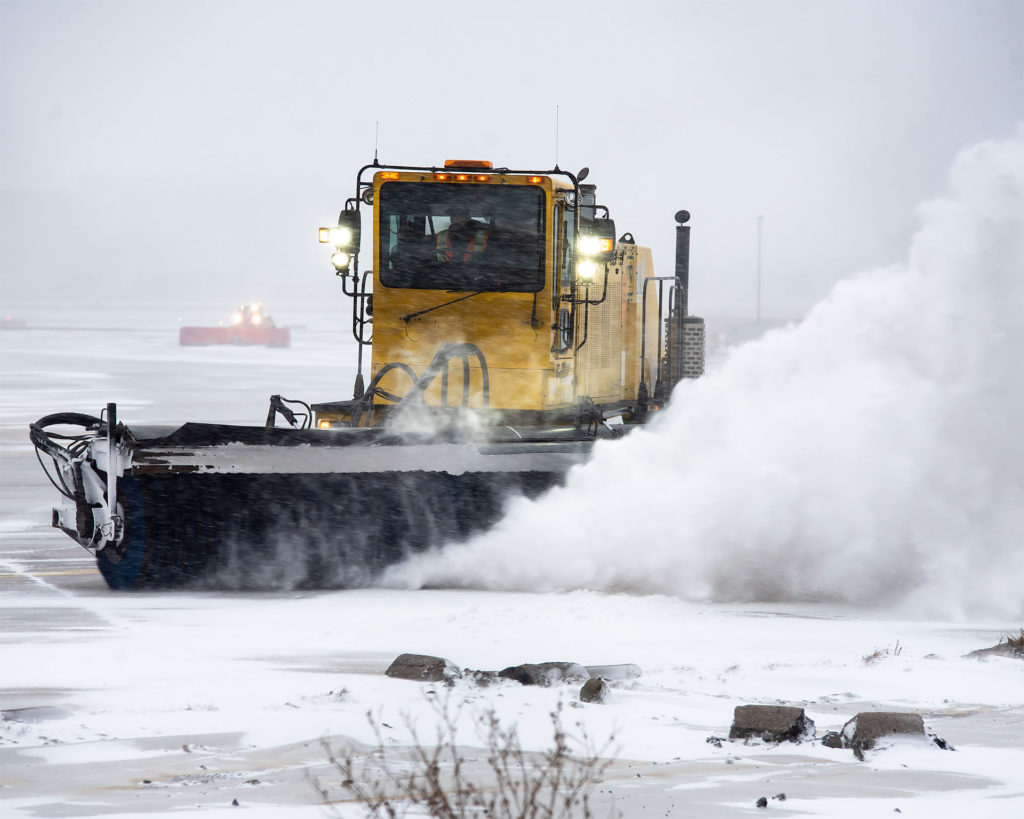
Clearing snow or ice from runways is no small task, and it must be done effectively to ensure the safety of aircraft taking off and landing. Depending on the weather, precipitation type, size of the airport, and staffing, any number of different types of equipment is used for ice and snow removal. There are plows, of course, and there are also sweepers, blowers, chemical trucks, snow melters, bobcats, and more. Denver International Airport, for example, has around 250 pieces of equipment used for winter operations, including modernized, multi-function machinery capable of plowing, sweeping, and blowing snow while laying chemicals or sand at the same time.
Airport operations must cooperate with ATC, working to clear snow in between aircraft departures and landings. It can take anywhere from 10 to 30 minutes to clear a runway, so preparing and planning around arrivals and departures is imperative to minimize holding times for aircraft inbound — or outbound. Airport vehicles, including plows, are equipped with radios to communicate with ATC. Just as aircraft are required to get clearance onto an active runway or taxiway, so are snowplows!
Airport operations employees are also responsible for measuring and reporting runway condition statuses to ATC, which in turn are passed on to pilots and dispatchers via radio communication or preflight NOTAMS (Notices to Airmen).
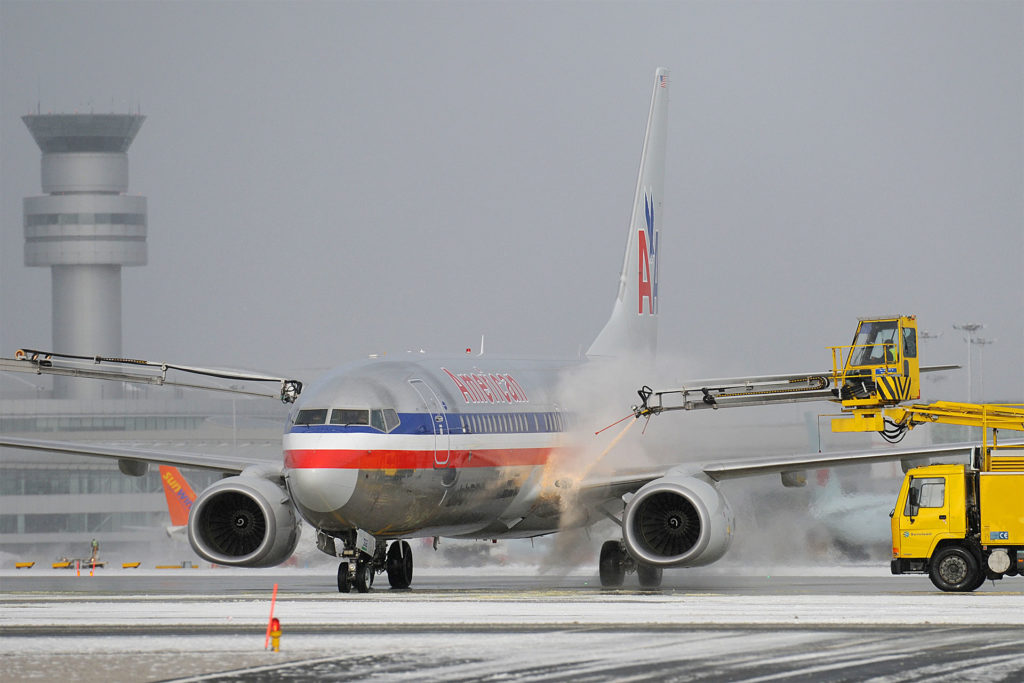
Deicing Aircraft
As the first flights of the morning begin to board, pilots are working with their ramp agents and ATC to get an idea of the airport conditions, ATC delays, runway conditions, takeoff performance, and deicing procedures. They need to ensure their airplane is free of ice or snow buildup before they depart — even an eighth-inch of frost on the wings can decrease lift up to 40 percent. Pilots also busy themselves with takeoff data and braking action for wet or contaminated runways. And when plowing operations are in effect, many taxiways or ramp spaces remain closed, so it’s imperative that the pilots plan for a taxi that won’t lead them into a snowbank!
Deicing procedures can be singularly complex and time-consuming, depending on a variety of factors: local equipment; deicing chemicals; deicing locations (whether or not you have to taxi across the field and/or wait in line behind five other aircraft); active weather; time of day; and aircraft type and limitations (for example, deicing with one engine running, both engines running, the entire aircraft, just the wings, etc. — all of which require different procedures). The captain of the aircraft has his or her hands full during this period.
The pilot-in-command is responsible for performing an inspection of the aircraft during the pre-flight, and requesting deicing when necessary. Most airlines also designate a specific ramp agent or operations agent to do a tactile inspection. As well, the agent consults with the captain of the flight to make sure everyone is on the same page regarding deicing. Either at the gate, after pushback, or after taxiing to a deice pad, the flight crew communicates with the deice truck by radio, confirming once again the location, type(s) of deice fluids to be applied, and to which areas of the aircraft.
Once the deicing begins, the process can take a few minutes or upwards of an hour — depending on the size of the aircraft, how good the equipment is, how many trucks are available, and how expedient the process is in general. Deice personnel are specifically trained in operation of the truck and types of fluid, as well as how and where to spray the aircraft — avoiding parts like engine intakes, wheel wells, pitot tubes, and windshields.
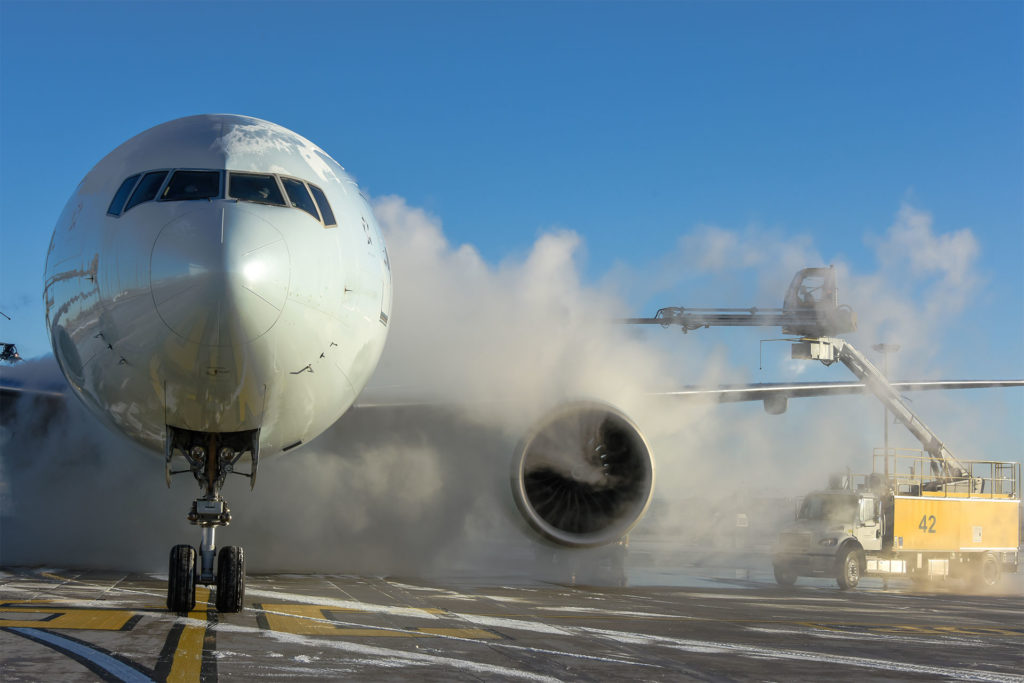
Of course, there are different types of deicing chemicals for different types of winter weather — some allowing longer holdover times (HOT) than others. HOT is a time calculated by the pilots during the deicing process, and is based on a regulator-approved chart and given conditions. It’s used to determine the time by which the aircraft must depart after deicing, and can range from a few minutes to more than an hour. If the pilots cannot depart by the HOT time (due to ATC delays, etc.) they have to return to deice again. Often, more fuel is used than expected in these situations, and the crew may even need to return to the gate to refuel before departure. Unsurprisingly, all of these actions contribute to costly delays — and leave the passengers wondering what in the world is taking so long!
Low Visibility
Low surface visibility due to low clouds, fog, rain, or snow is another cause of air traffic chaos at airports during the winter. In good visibility, when aircraft can see each other and the airport, air traffic controllers have the flexibility to use minimum separation protocol and maximize efficiency. In poor visibility, stricter ATC procedures are utilized to keep aircraft separate and ensure safety, including fewer departures per time period, higher separation minimums, utilizing specific departure and arrival procedures, and even utilizing different navigation services.
Some airports, for example, have Category II or Category III instrument landing system (ILS) approaches, which, coupled with a properly configured aircraft and trained pilots, offers flight crews the guidance to land in extremely low visibility. These systems are often installed only on a primary runway with prominent lighting systems and specific low-visibility taxiway routes. On good-weather days, these systems aren’t necessary. But during low visibility operations, an airport might go from utilizing two or three runways at a time to using just the single, primary runway, creating delays for both inbound and outbound aircraft.
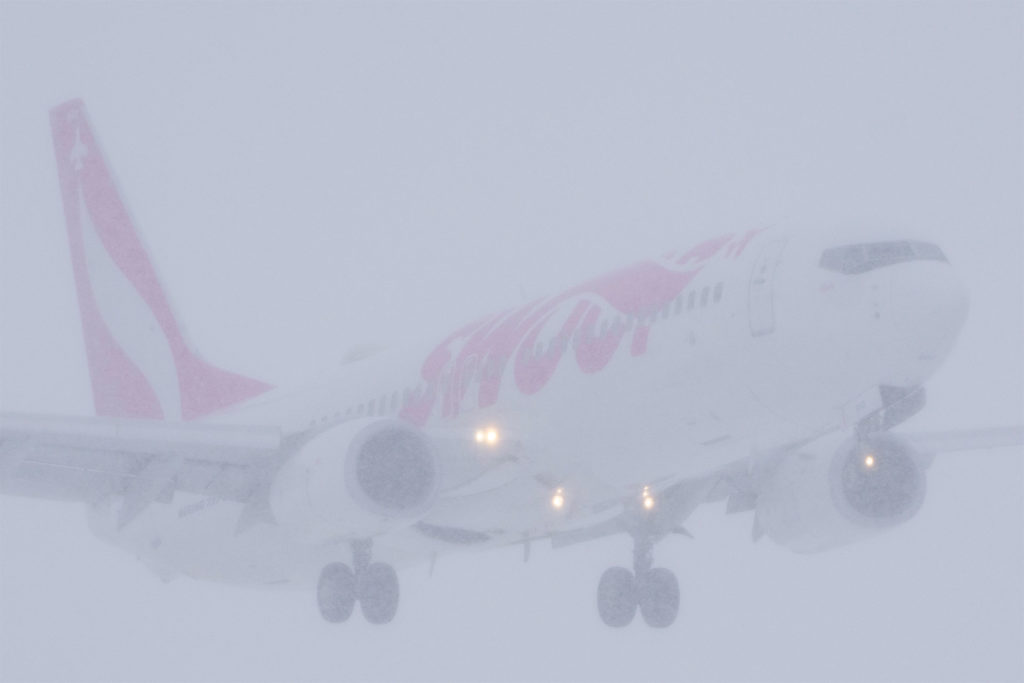
All of these factors can turn the typical, organized rush-hour congestion into a string of unorganized delays when visibility drops. An aircraft delayed inbound is delayed getting to the gate, and, you guessed it, delayed leaving the gate on its subsequent flight, then delayed to its next destination. In the meantime, another inbound aircraft is stuck waiting for that same gate to open up so it can park, which then delays that flight’s inbound and outbound times. It’s a domino effect if there ever was one.
When passengers deplane in the cold, wintry weather after a long day of delayed flights, they rarely see or understand that those delays they encountered are almost all quite intentional — and in their best interest. While we often blame delays like this on airline incompetence, they actually have less to do with incompetence and everything to do with safety. In fact, we can blame it on competence. Anything otherwise would be categorized as negligence.
Air transportation, when done right, gets passengers where they need to go — often on time, and as safely as possible. While people are collecting their bags from the carousel, rolling their eyes when they meet their loved ones with comments about how their flight was delayed (again!), we are reminded that the behind-the-scenes chaos that we know as winter airline operations is working exactly as it should.

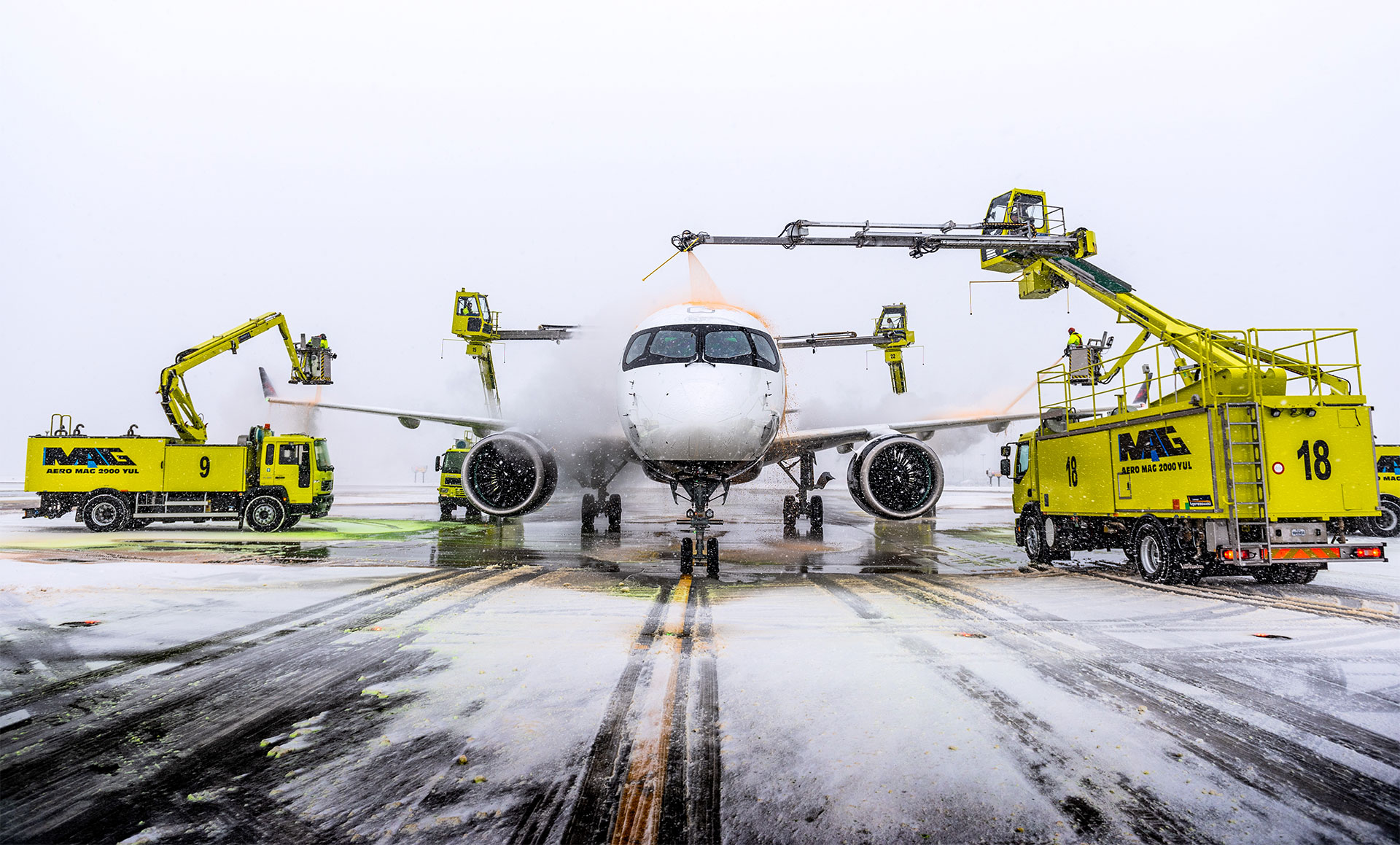

Perhaps this article should be in the airline magazine found in the seat pockets.
AME Ret’d 45+ years